- TOYO HISTORY
- LANGUAGE


Resumption of the Naruo Project, high growth and its end
From expansion-and-contraction to dramatic growth (1965-1969)
Although the decade from 1965-1975 began with the so-called “slump of 1965,” the Japanese government implemented a number of economic stimulus measures, which included a decrease in the official bank rate, an increase in the amount of fiscal investment and loans, a broad tax reduction, issuance of construction bonds, etc. The effects of these policies, together with a global economic boom, spurred a period of high economic growth called the “Izanagi Boom,” which extended from 1965 to 1970.
Accompanying this economic expansion, the volume of cargos handled by ports increased more than expected, ships became larger in scale, and the concentration of industry in coastal areas continued. As a result, additional construction of port and harbor facilities and creation of reclaimed land became urgent issues. Therefore, in March 1968, the government established the “3rd 5-Year Plan for Port and Harbor Construction” with a total project scale of \1,030 billion. The “5-Year Plan for Creation of Coastal Industrial Zones,” which was part of above-mentioned plan, called for construction of an average of 47.19 million m2 of land per year. This scale of reclamation work was predicted to require full operation of about 1.5 times as many large-scale dredgers as in actual past construction, and was a great ray of hope for the dredging industry, which had been mired in recession for some years.
Responding to this heightened demand for land in coastal zones, Toyo Construction finally resumed its long-cherished Naruo Project in 1966. In addition, the Osaka World Exposition was scheduled to open in 1970, and full-scale construction related to that event began around 1968. Together with private-sector capital investment, these developments suddenly invigorated the construction industry, and Toyo Construction also entered a period of dramatic growth.
Supported by this positive turn in the business environment, the Company reviewed its internal systems with the aim of further expanding its lines of business. Beginning with the upgrading of a number of sales offices to branches, including Nagoya, Fukuoka (now Kyushu Branch), Kanazawa (now Hokuriku Branch), Okayama (now Chugoku Branch), and Takamatsu (now Shikoku Branch), Toyo Construction also established the Tokyo Headquarters in 1968 and Tohoku Branch in 1967. With the exception of Hokkaido, where a branch was established in 1971, this basically completed today’s sales network by blocks.
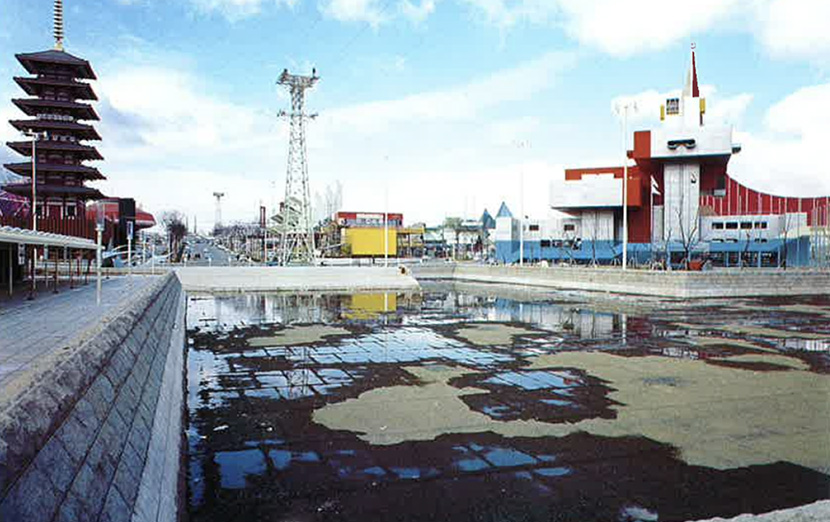
Construction of an artificial lake for the Osaka International Exposition (Osaka Pref.).
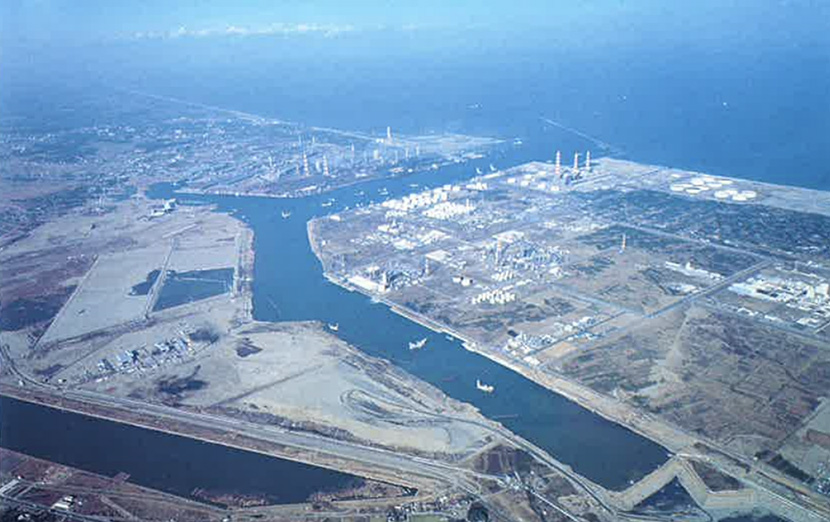
Dredging and reclamation at Kashima Port (Ibaraki Pref.).
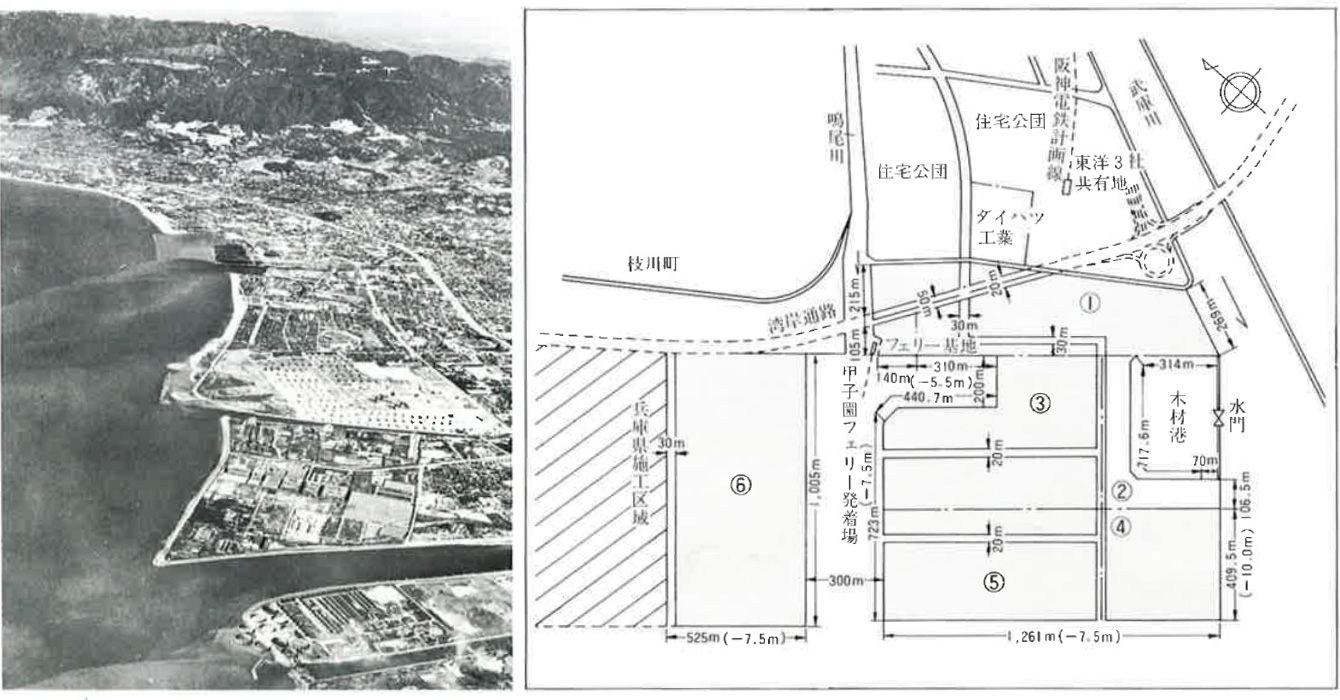
Reclamation plan for Naruo (Hyogo Pref.) at the time of resumption of work. Reclamation plan drawing
The main events
| May 1965 | Nagoya and Fukuoka Sales Offices upgraded to branches. |
|---|---|
| September 1966 | Establishment of Naruo Division. |
| October 1966 | Capital increase to ¥1.76 billion. |
| May 1967 | Ground-breaking ceremony for Naruo Reclamation Project. |
| June 1968 | Tokyo Headquarters established. Kanazawa, Okayama, and Takamatsu Sales Offices upgraded to branches. |
| May 1969 | Tohoku Branch established. |
| July 1969 | Ceremony commemorating the 40th Anniversary of foundation. |
| November 1969 | Conclusion of an agreement for absorption merger of Hitachi Zosen Coastal Construction Co. |
Overseas advances and a domestic construction slump (1970-1974)
To strengthen its business fundamentals and respond to the increase in dredging work at the time, Toyo Construction acquired Hitachi Zosen Coastal Construction Co. in an absorption type merger on April 1, 1970. As a result, Toyo also acquired a large number of work ships, machinery, and other equipment, beginning with 7 pump type dredgers, and dramatically increased its dredging capacity to 80,400 horsepower.
On the other hand, although Toyo Construction had attempted to develop overseas businesses for many years, for example, by conducing construction surveys and participating in bidding, the Company finally advanced overseas in November of 1972, when it received an order for construction of an oil terminal in Singapore. This was followed by an increasing number of inquiries for overseas construction, which included an order for construction of a pier in Malaysia in December of the same year, etc. The Overseas Division was set up in 1973 as the department responsible for managing overseas work, and efforts to develop overseas business began in earnest. In May 1973, Toyo Construction received an order for construction of the Navotas Fishing Port in the Republic of the Philippines, which has become its largest base of oversea operations. The Company also opened a Manila Sales Office in May 1973, and has continued to contribute to the development of the Philippines through construction projects over the last 40 years.
Domestically, commodity prices continued to rise after 1972, and amid this ongoing inflation, the 1st Oil Crisis occurred in late 1973, resulting in a situation of “skyrocketing prices.” The government adopted a tight money policy in an effort to control the economic confusion, but the reduction of the government budget, and particularly public works spending, resulted in minus growth on a real basis in 1974, and the construction industry fell into a serious recession.
At this time, the Naruo Project was just underway after many setbacks, and an enormous amount of funding was considered necessary in the future. At the same time, advance payments increased as a result of an increase in orders for general civil construction and private-sector construction, placing the Company in serious financial straits. The financial situation finally returned to stability thanks to an expansion of new correspondent banks and a capital increase by issuance of new shares at market price in December 1974.

Construction of Gastec Terminal (Singapore)
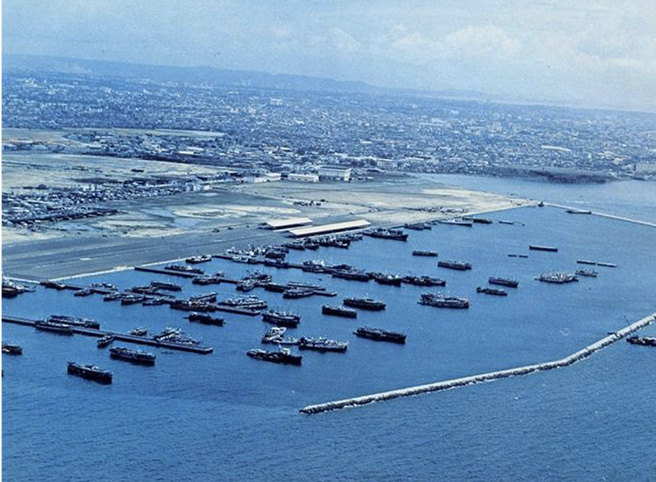
Construction of Navotas Fishing Port (Philippines)
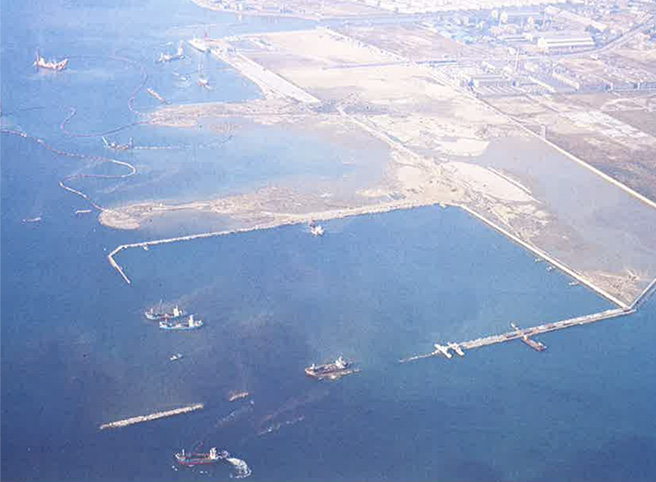
Reclamation site at Naruo (Nov. 1971)
The main events
| April 1970 | Acquisition of Hitachi Zosen Coastal Construction Co. by an absorption merger Capital increase to ¥3 billion. |
|---|---|
| May 1970 | Mr. Hachiro Fujii named President. |
| April 1971 | Hokkaido Branch opened. |
| July 1971 | Capital increase to ¥4.5 billion. |
| February 1972 | Approval of completion of Naruo No. 1 section. |
| August 1972 | Capital increase to ¥5.0 billion. |
| December 1972 | Singapore Sales Office opened. |
| April 1973 | Overseas Division established. |
| May 1973 | Manila Sales Office opened. |
| November 1973 | Approval of completion of Naruo No. 4 section. |
| November 1974 | Approval of completion of Naruo No. 3 section. |
| December 1974 | Capital increase to ¥7.43 billion. |